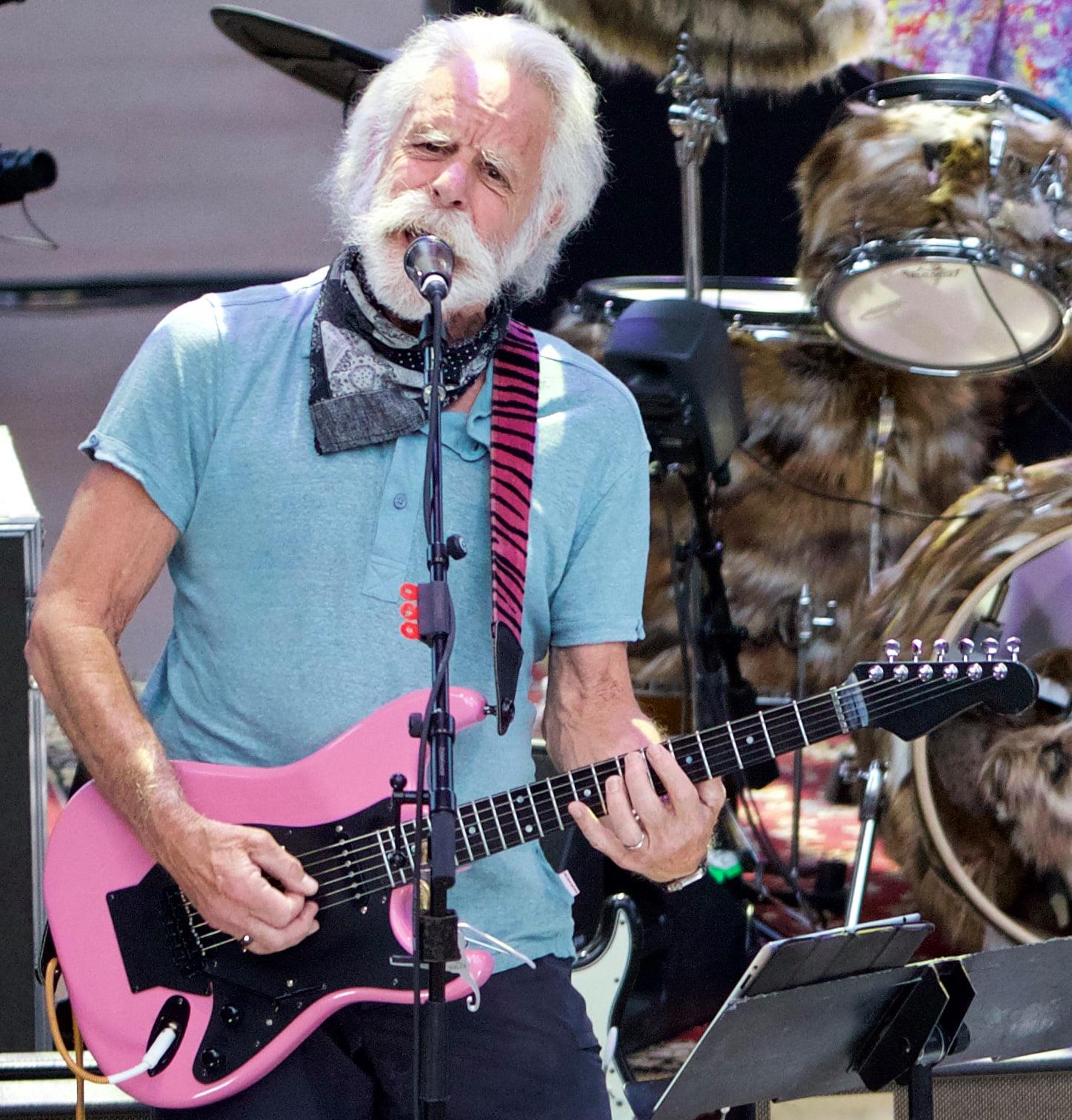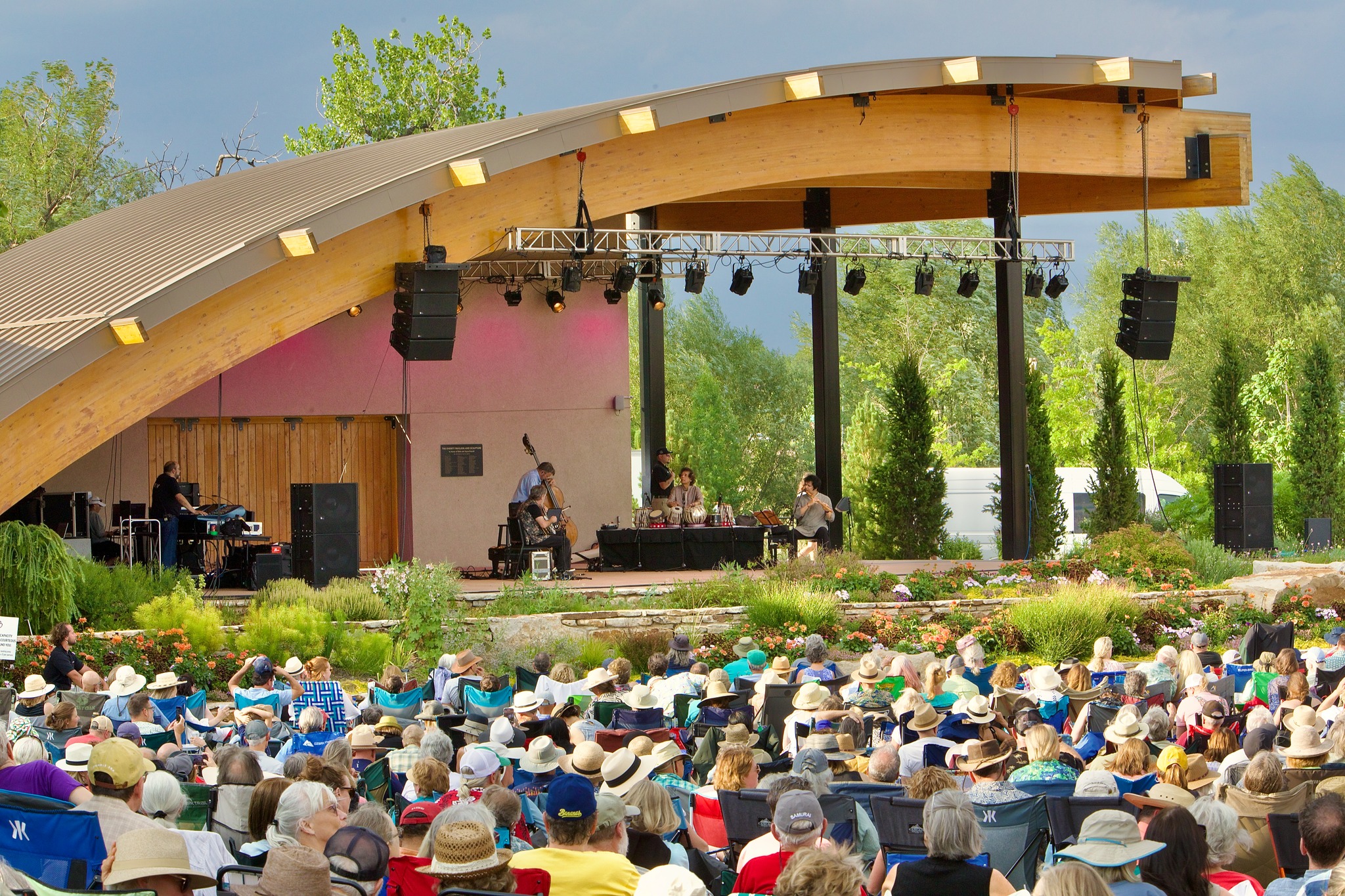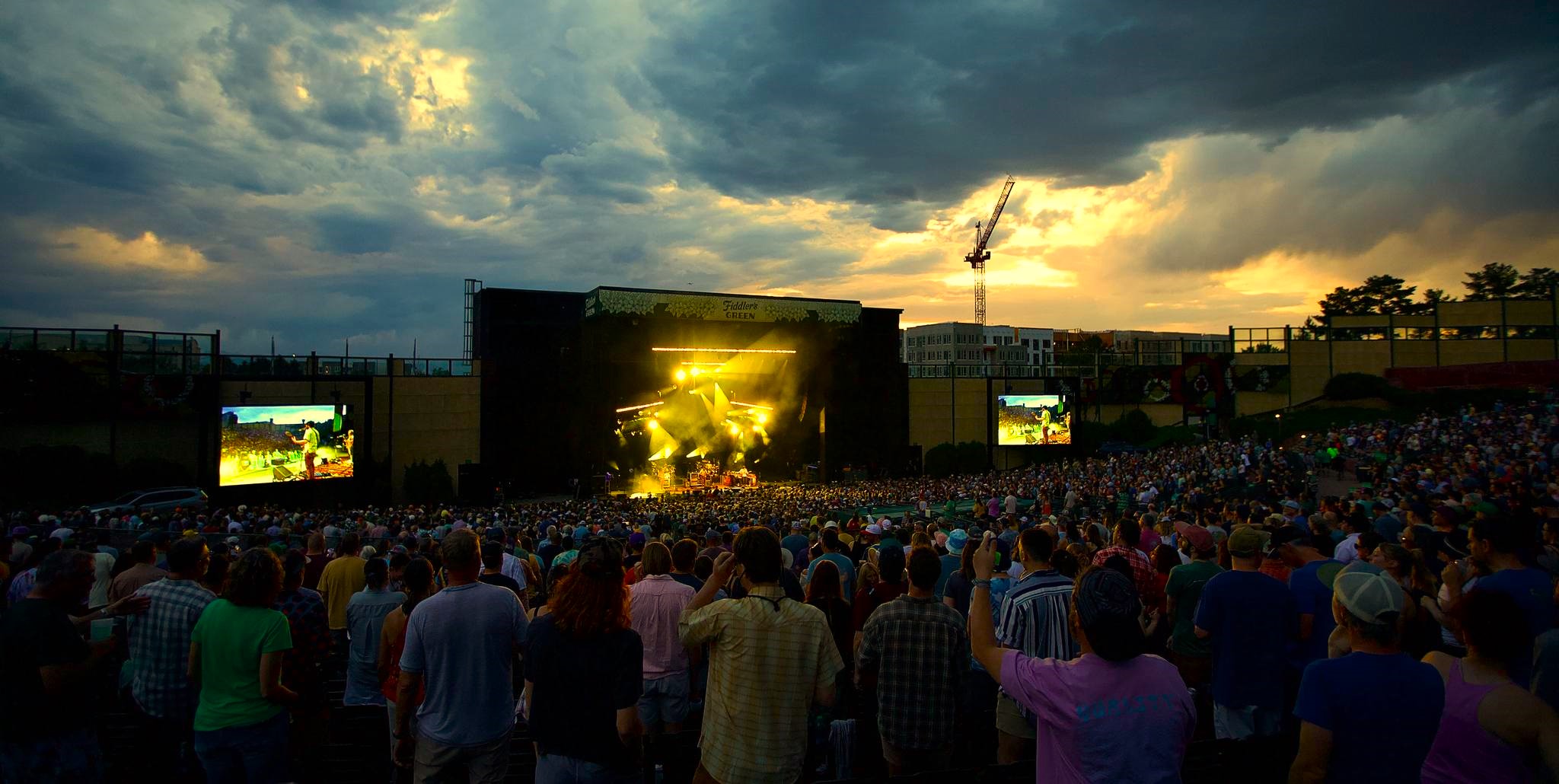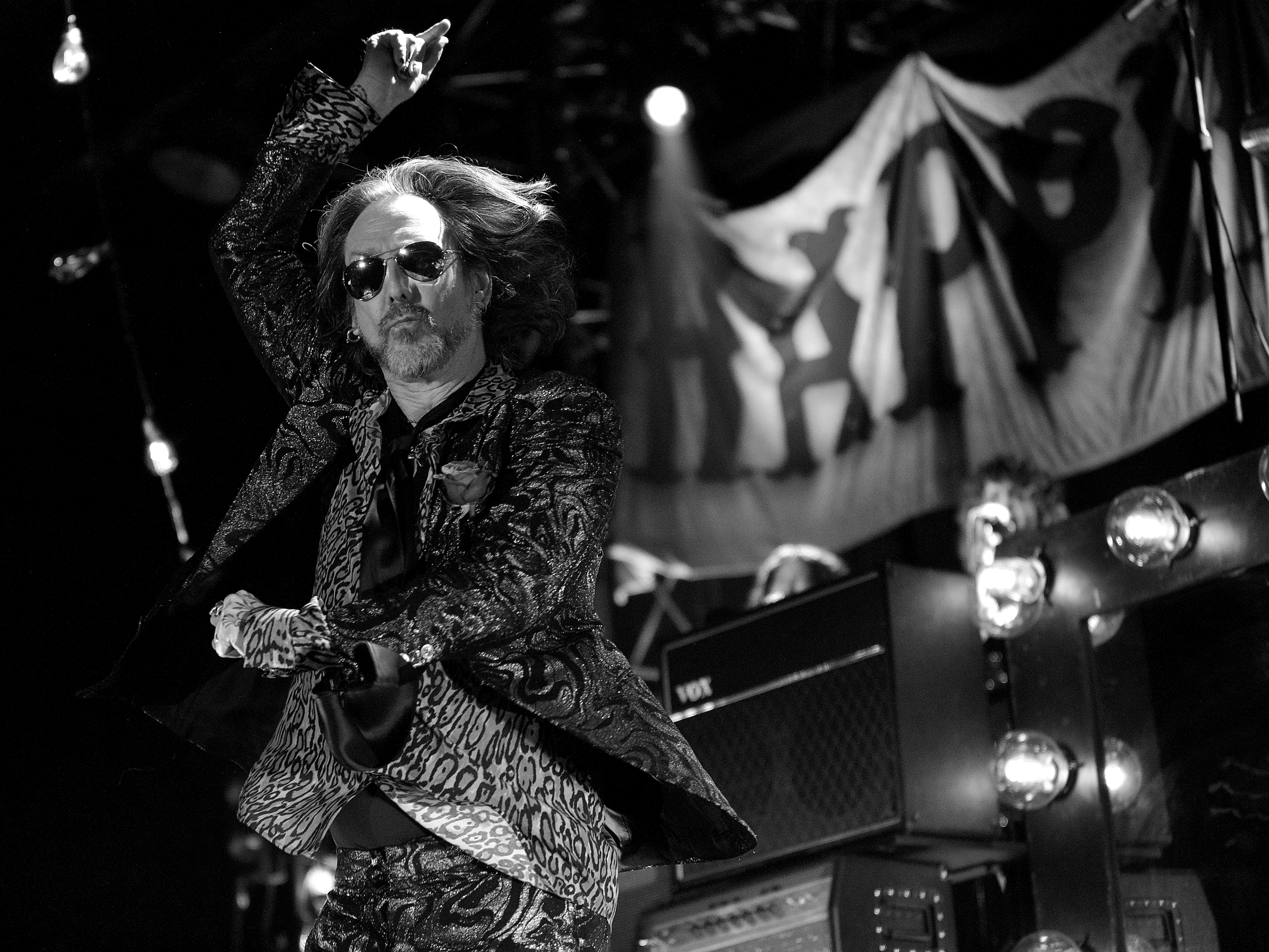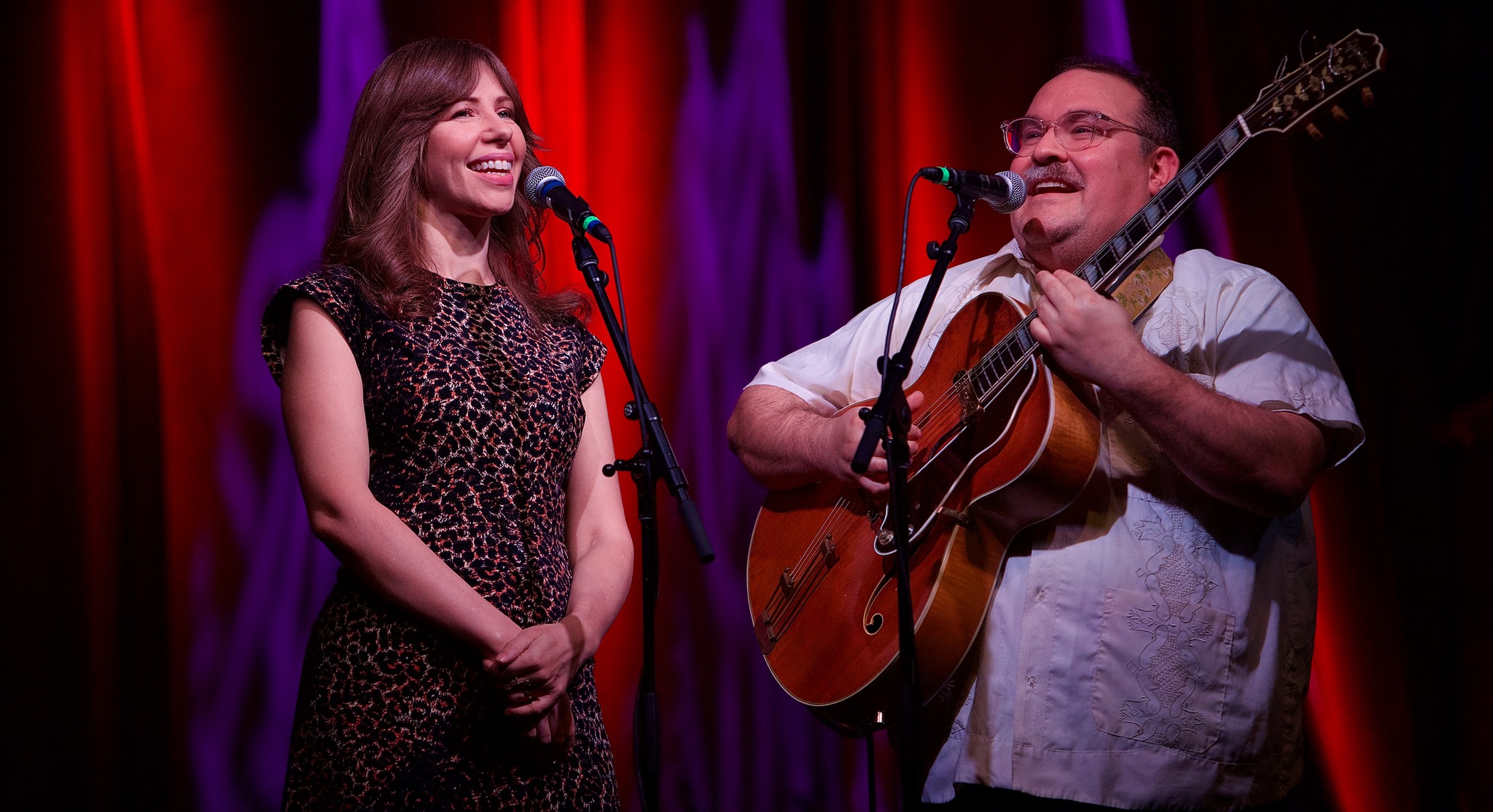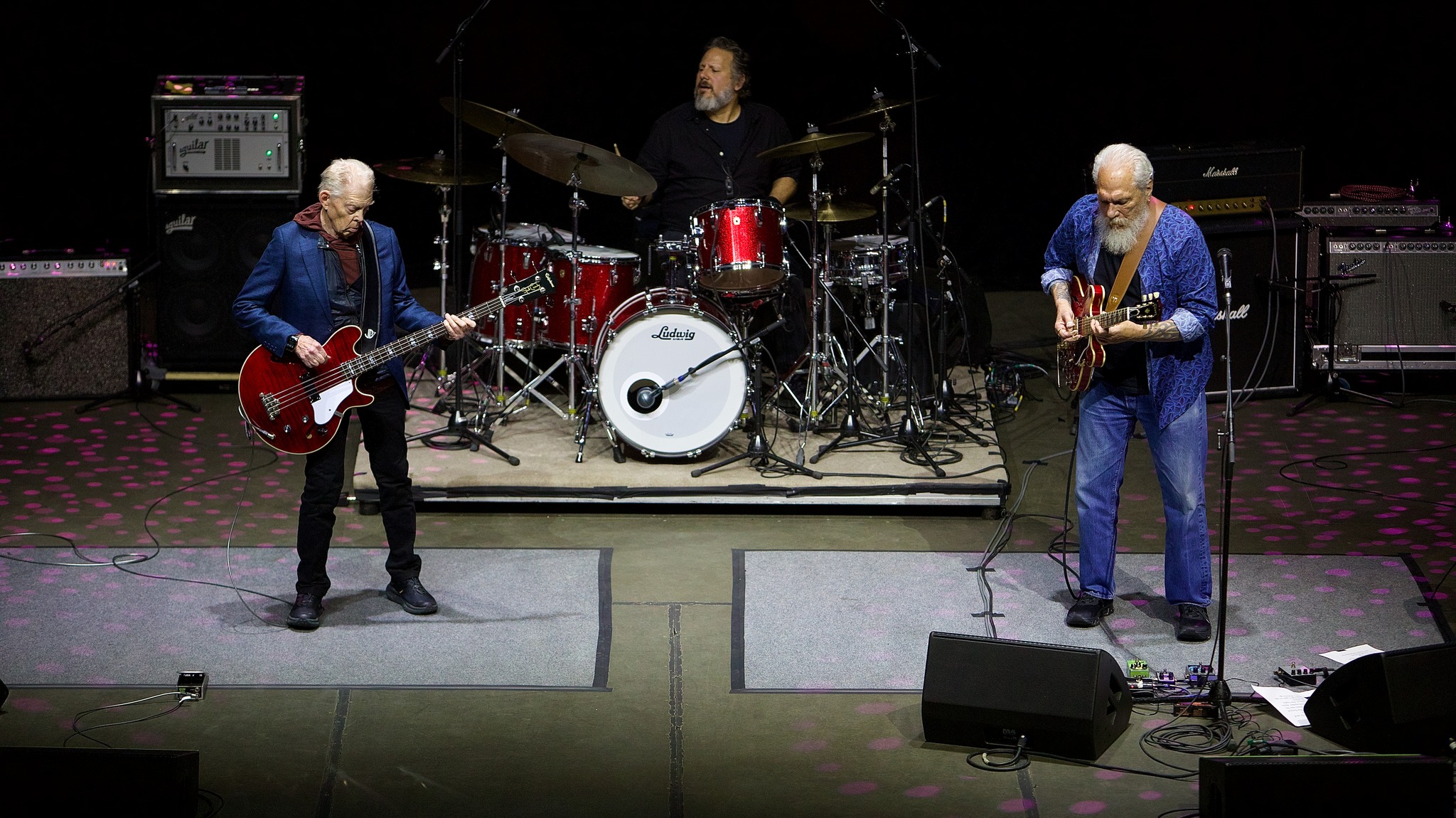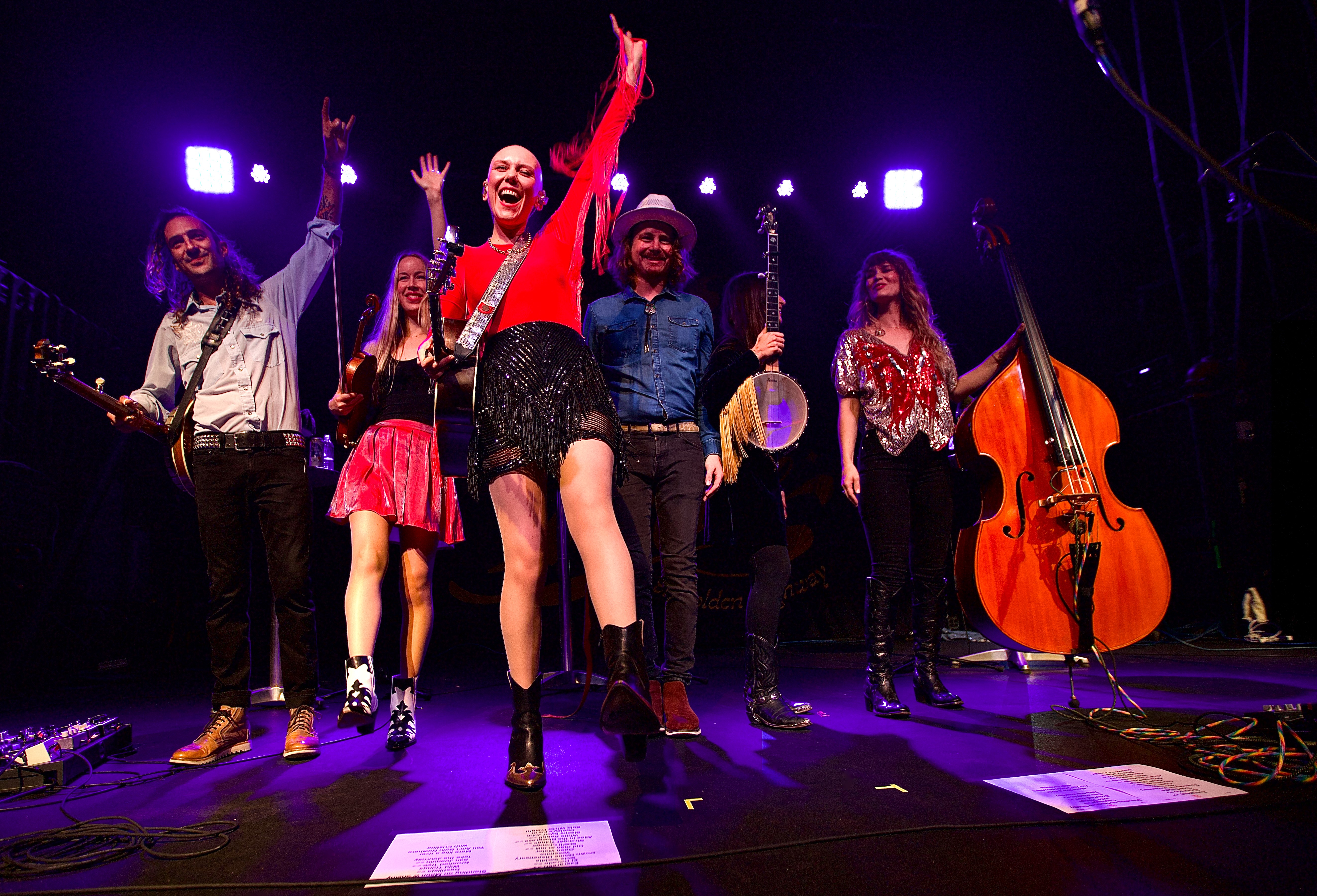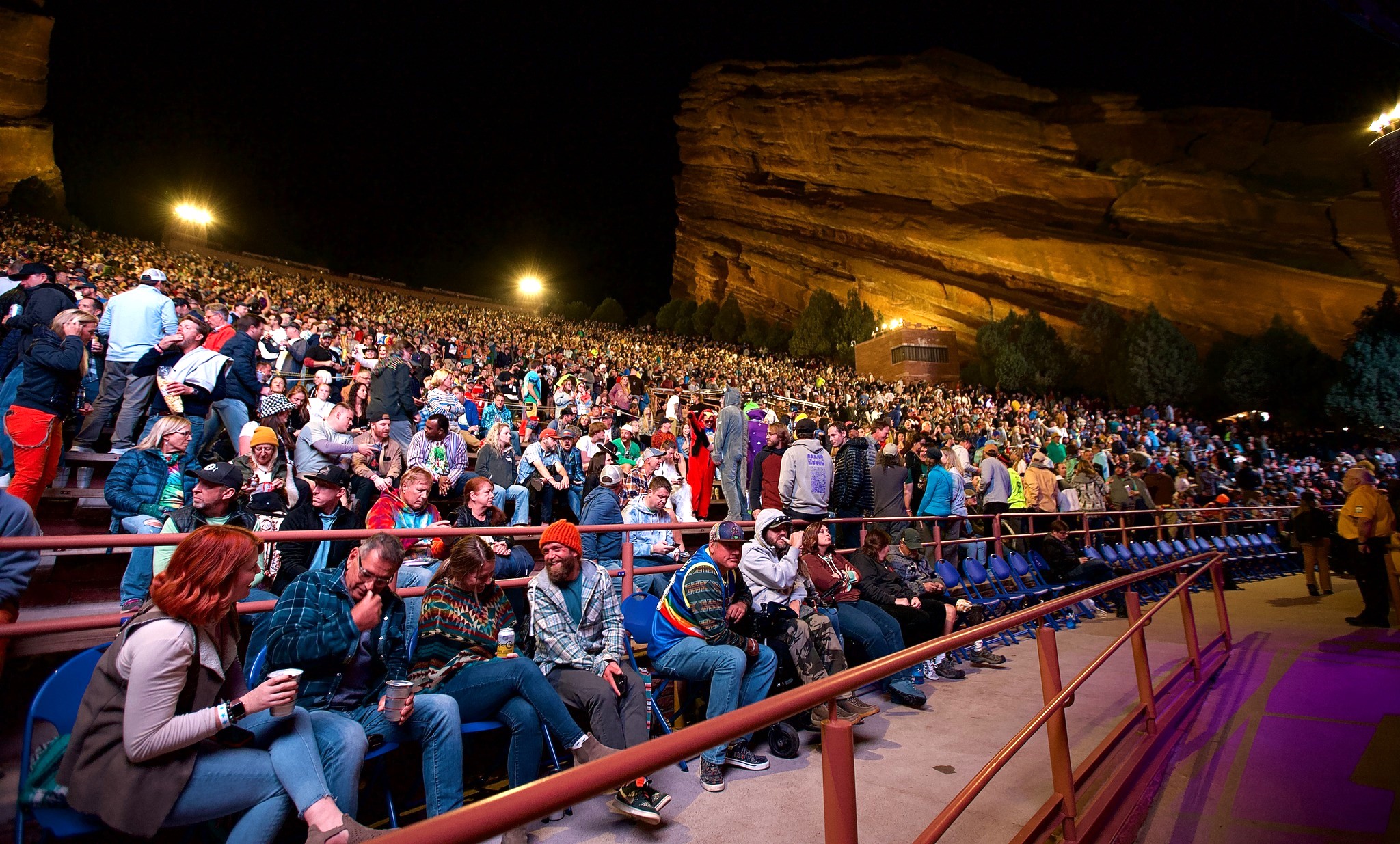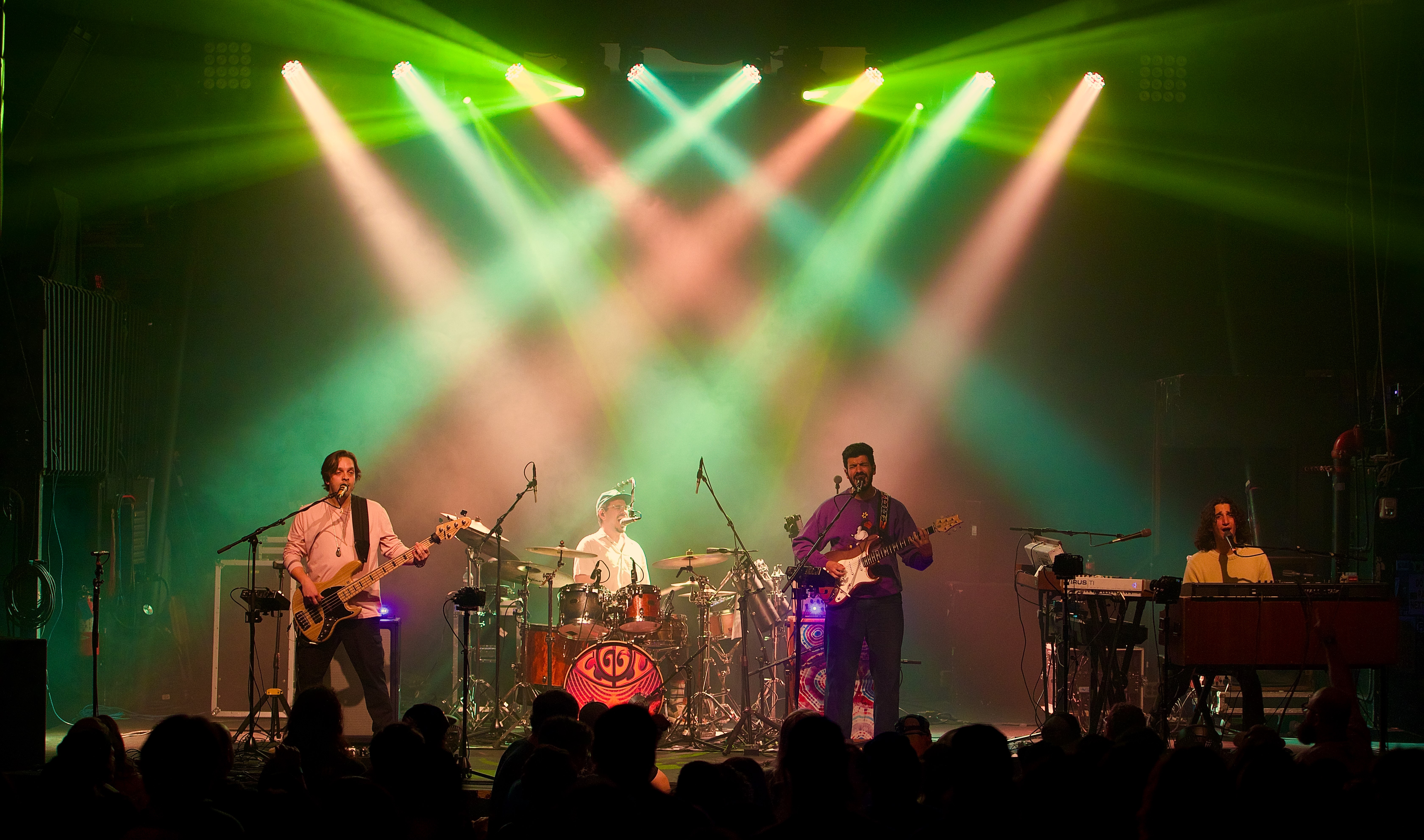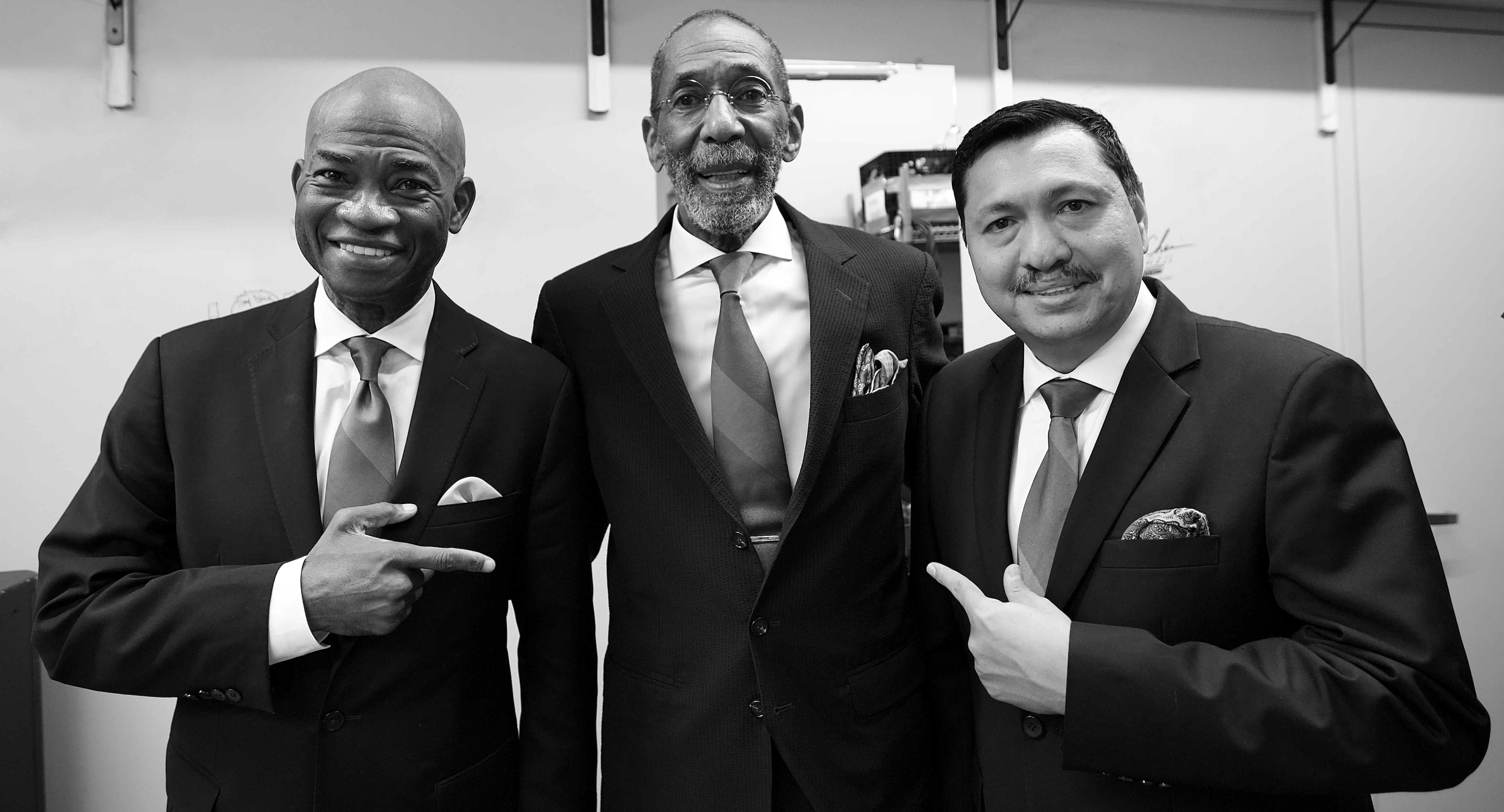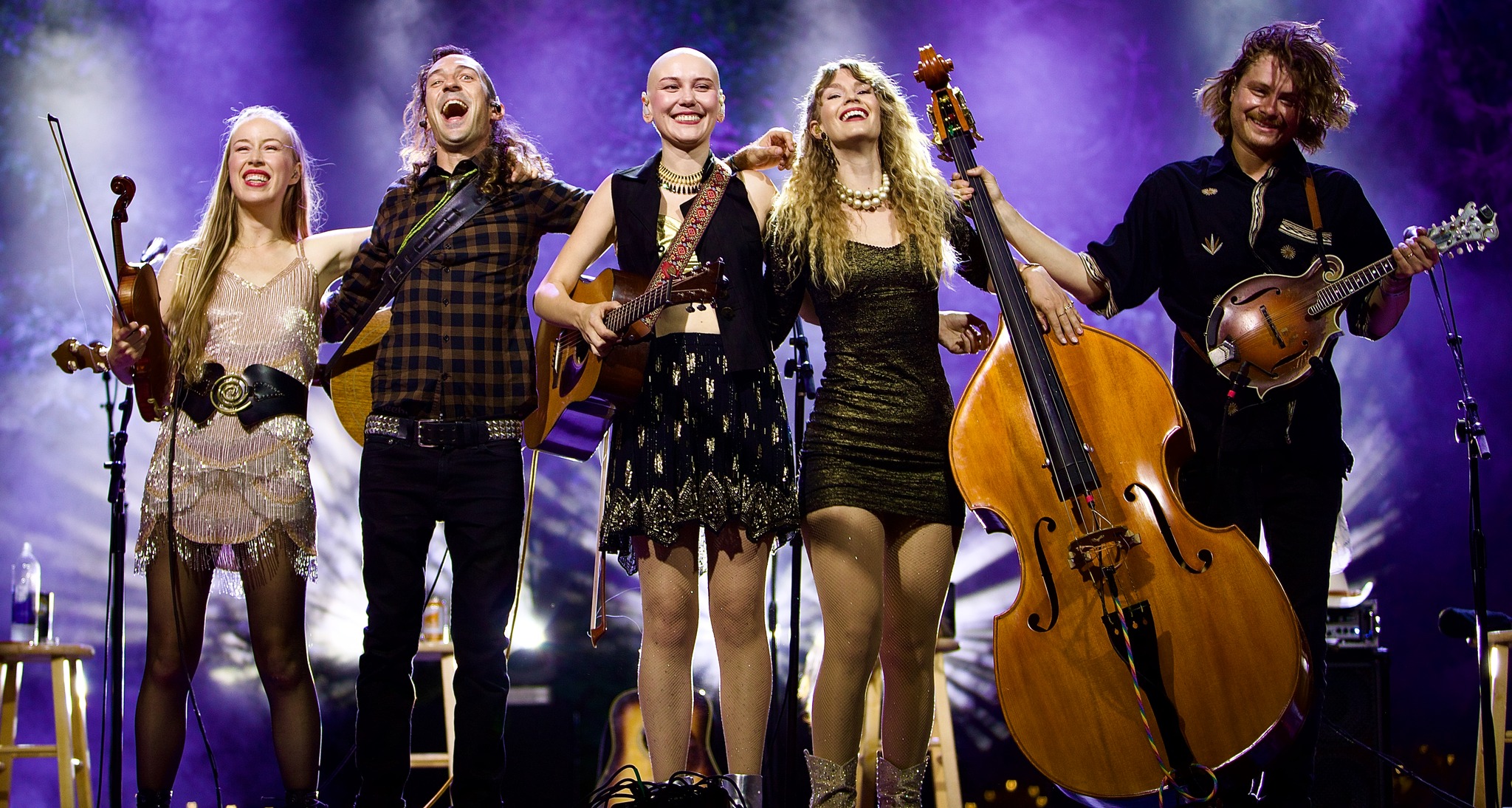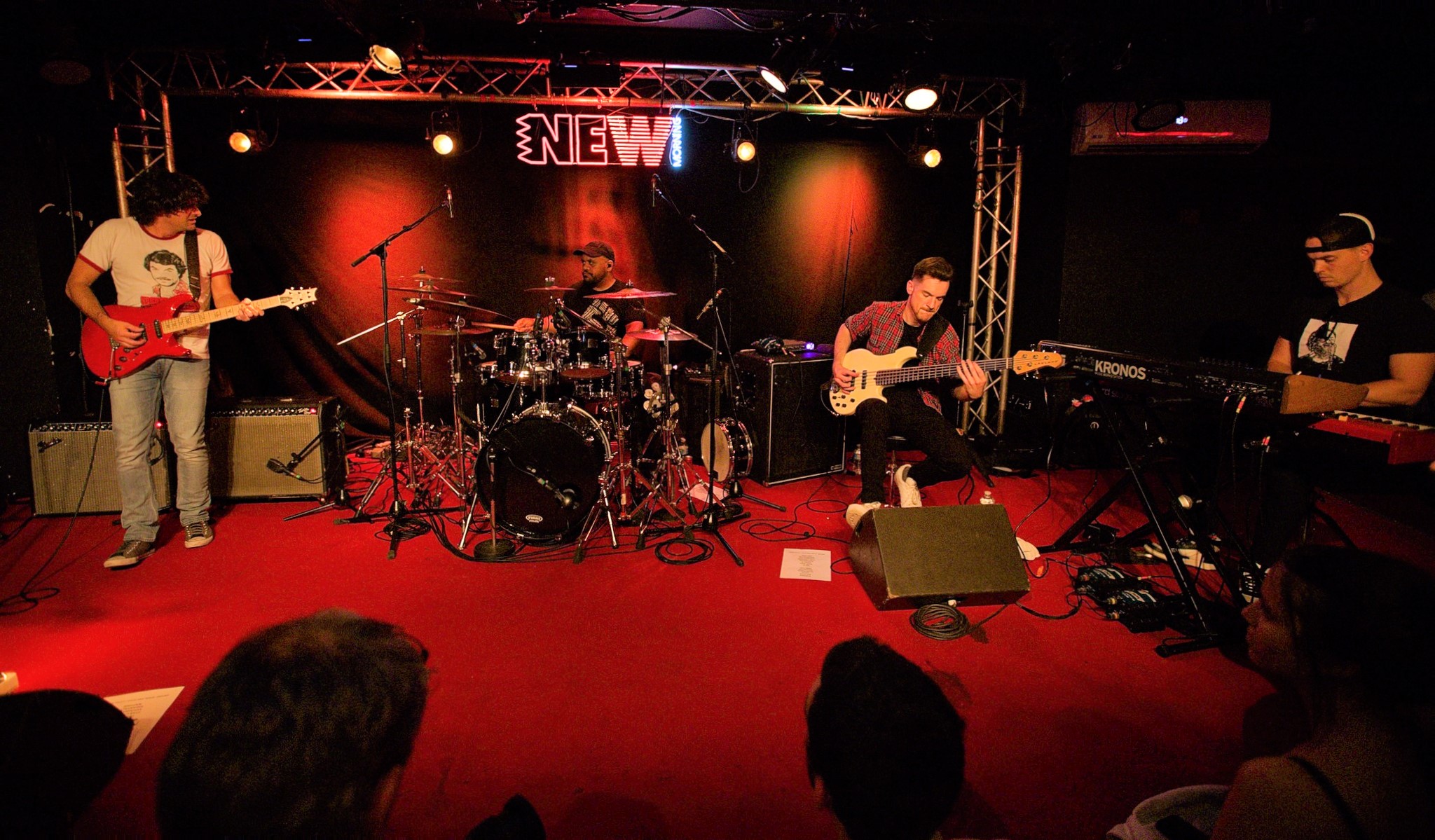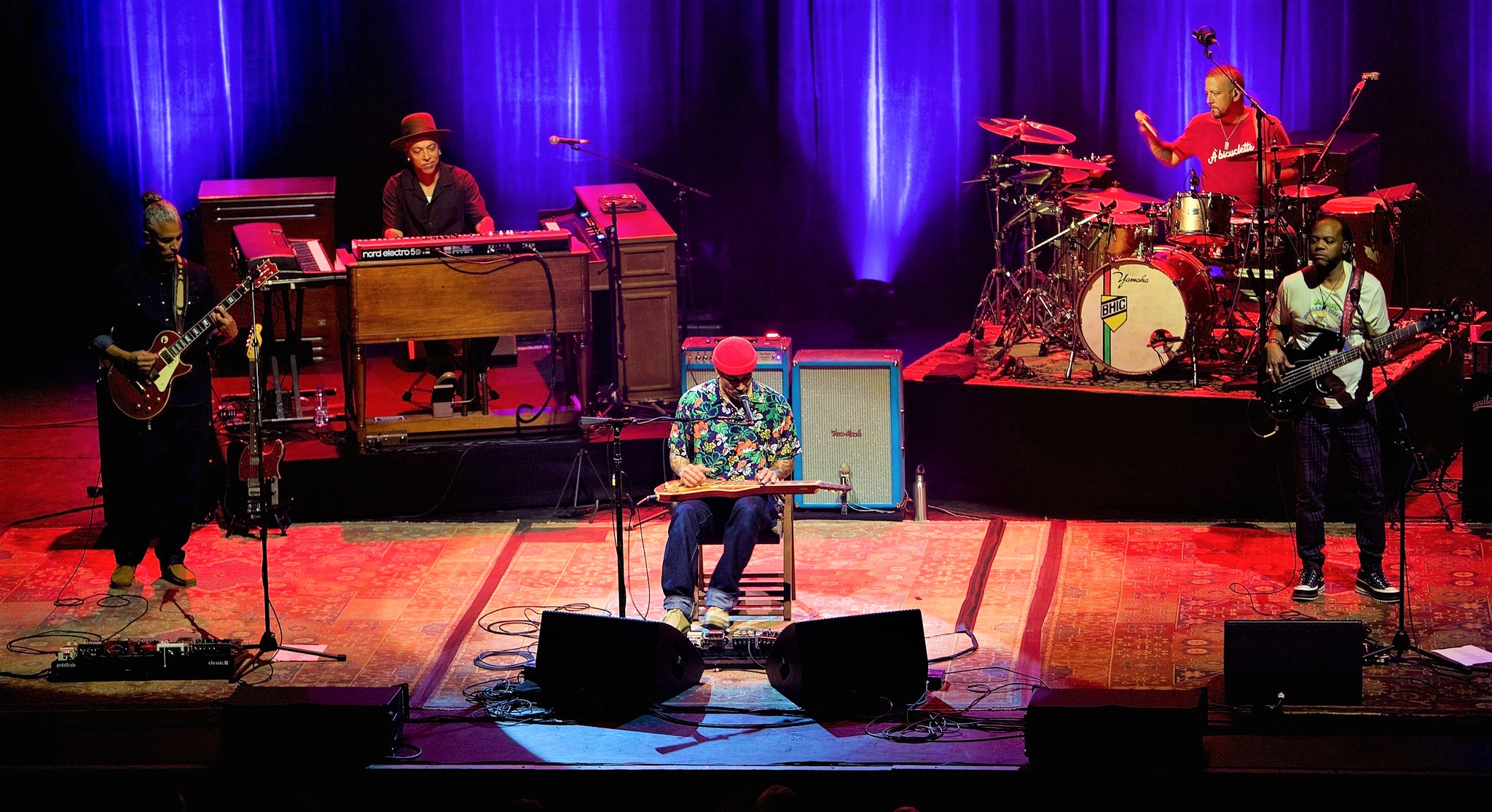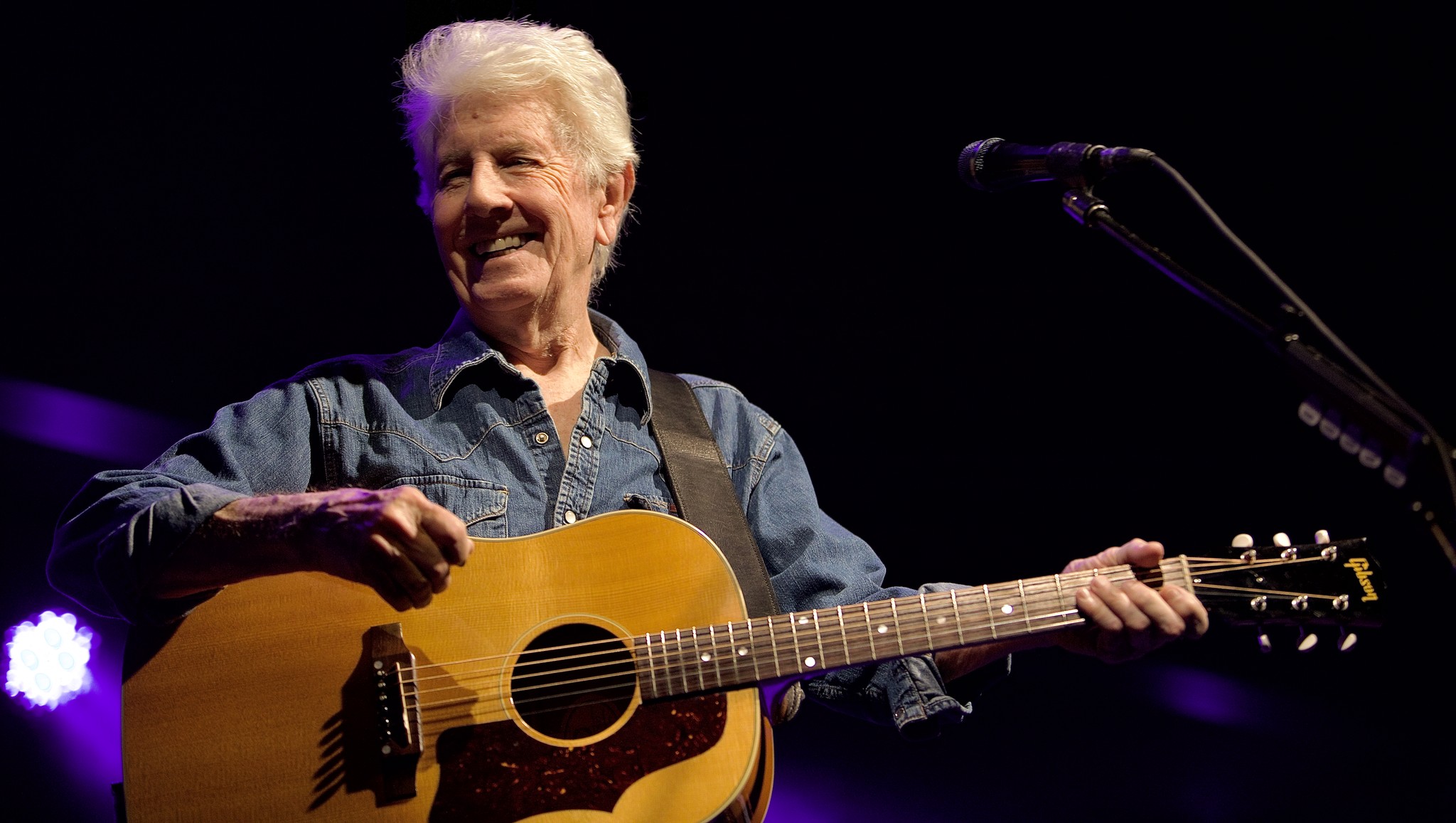In April, Bob Weir announced that he would be heading out to the Centennial State for four nights of canine revelry, outfitted not only with his brotherly band, but with the newly acquired Wolf Pack in tow. Starting off with two mid-week shows at the musical mecca of Red Rocks Amphitheatre and ending with two more nights in the mountain serenity of Vail, Colorado at The Gerald Ford Amphitheater, Weir would be accompanied by the usual suspects in tympanic master Jay Lane on drums and Don Was on bass. In addition, Dead and Company confidant Jeff Chimenti would join the outing handling piano duties. As if this lineup were not enough, the addition of the Wolf Pack promised to pull anyone over who was on the fence about securing tickets for any night they could get their hands on. Consisting of giant talent in Greg Leisz on pedal steel, Sheldon Brown on woodwinds, trombonist Adam Theis, violinist Mads Tolling, and cellist Alex Kelly, this newest addition to the Weir arsenal has not only made what fans love in Bob Weir better, but shows the continued drive of the band master to keep creating and doing more even as a septuagenarian. To make things more interesting, this would be the first time that The Wolf Pack would be playing in front of a live audience, their only other performances being webcasts from Weir’s TRL Studios in February. These events would also mark the band’s first return to the stage in over a year and a half. To say anticipation was high would be an understatement for any Deadhead who had come through the pandemic and was ready to continue carrying the tie-dyed torch and get down with their fellow congregate of the counterculture.
Arriving two hours prior to show time on Wednesday, it was easy to see that Tuesday’s performance did not disappoint as the faithful had returned in full force, cars congesting the windy roads of entrances 1 and 2 leading to the amphitheater and backed all the way down to highway 93, moving at the pace of turtles, or should we say terrapins.
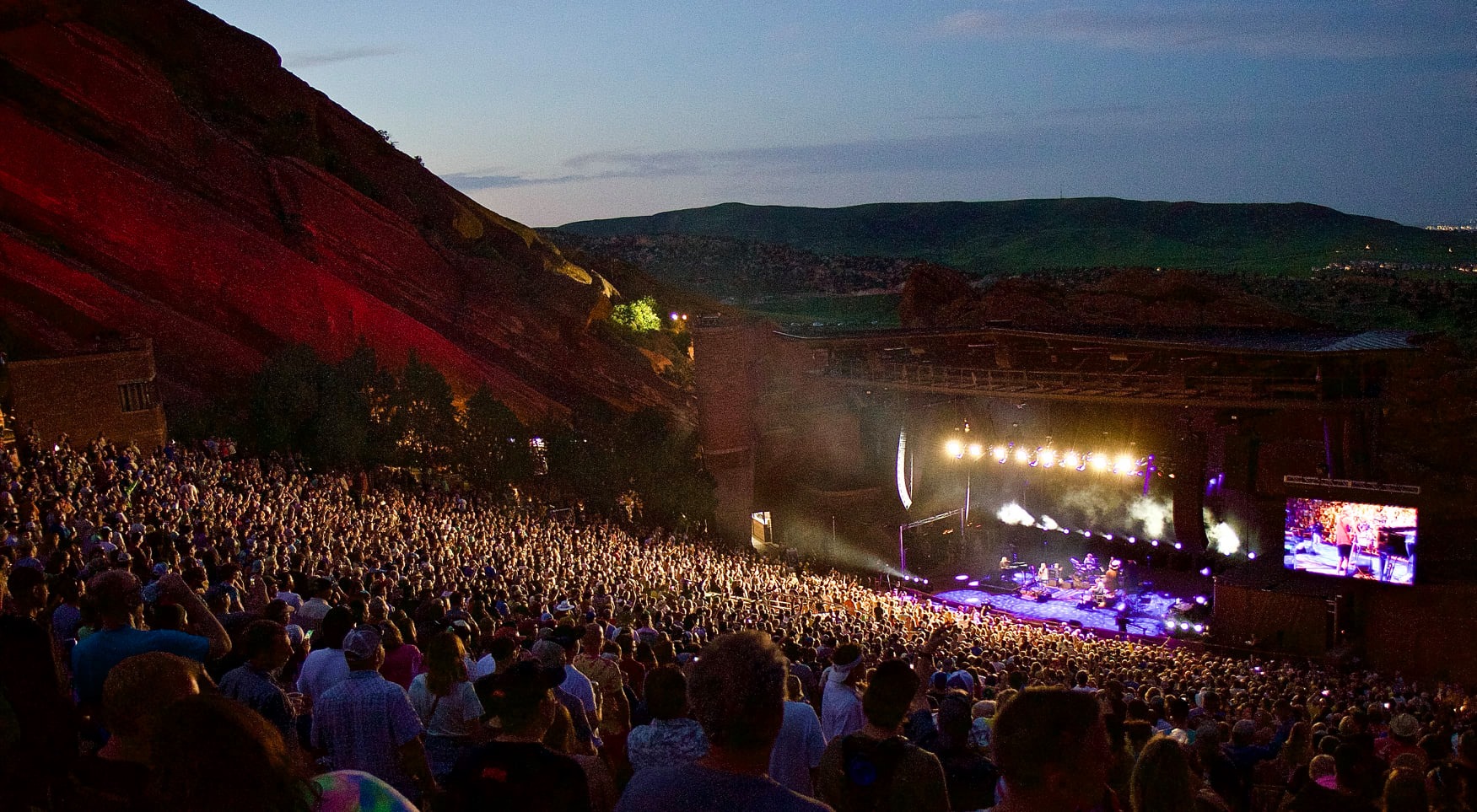
Inside at 7:15, the venue was less than half full and this absence had many wondering if the amphitheater was still observing COVID restrictions and operating at reduced capacity or if many were still out in the parking lot imbibing before the event. By 7:45, it was clear that it was the latter and that reduced capacity was a thing of the past for this monolithic space.
Showtime was billed as 8:00 pm and with the time approaching, one could hear the cheers and calls to bring the band out and start what would be another great night in the history of this venue as well as the man who had brought so many people together here for the last 40 years. As the devout waited and continued to talk amongst themselves, Jay Lane came out to the front of stage, red dixie cup in hand, and surveyed the crowd with a scowl of seriousness, going unnoticed by the crowd for at least a minute. As the time passed and more took notice, applauding, whistling, and participating in general noise making, Lane finally broke his intent stare, raised his cup, and shared a smile and a sip, before meandering back into the shadows of the side stage area, raising the energy level and pre-show anticipation of everyone within the first 30 rows.
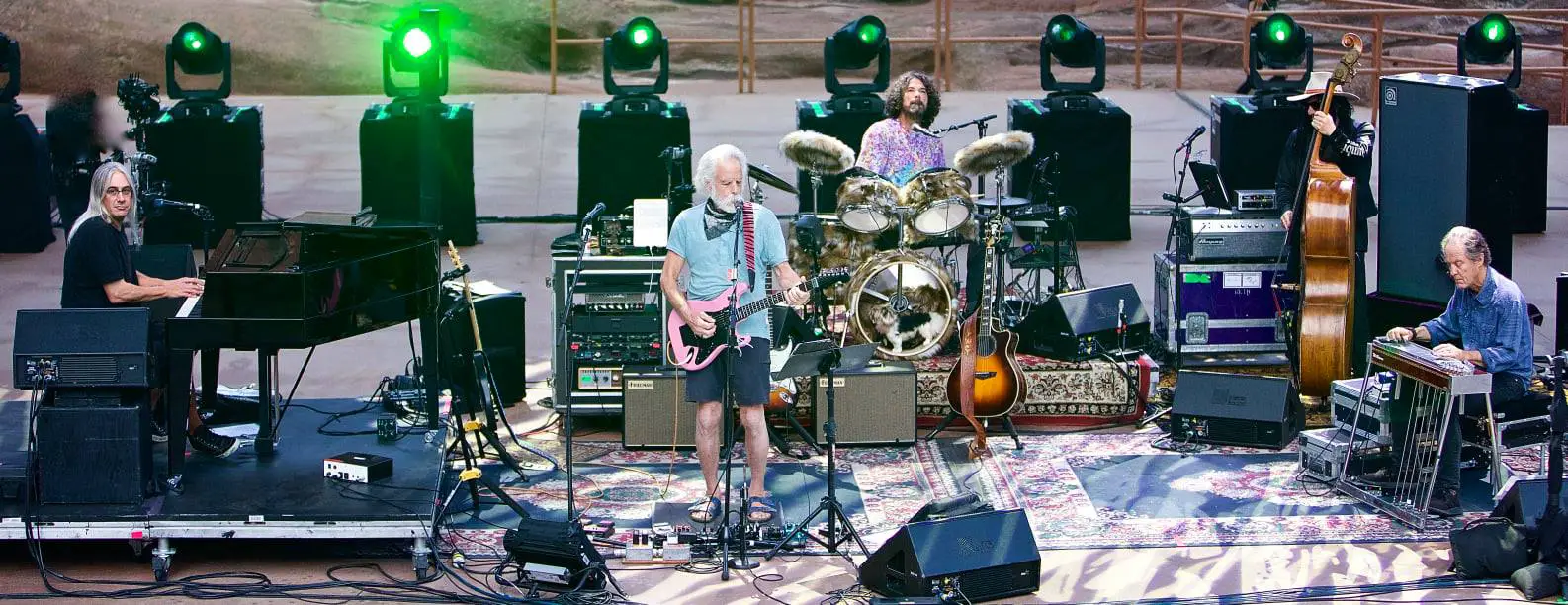
At a little past eight, the time had finally arrived and Weir entered the stage with Lane, Was, Leisz, and Chimenti and all received the warm welcome of thousands, taking a moment to take it all in as they scanned the filled seats stretched out before them. The set kicked off with a nice musical sandwich of “Music Never Stopped”, its coda, and the filling of “Easy Answers”. Weir appeared to be in 80’s rock star mode, playing a pink Stratocaster with what can only be described as a hair band guitar strap, donning a pastel top, and accessorized with a neckerchief. The set opener seemed to pick up with the timeless messages from the night prior that music, this music, the soundtrack of the Deadheads, will continue to be played regardless of the performer, and nothing, including a pandemic, will stop the experiential aspect of the live music we share and need to keep on keepin’ on.
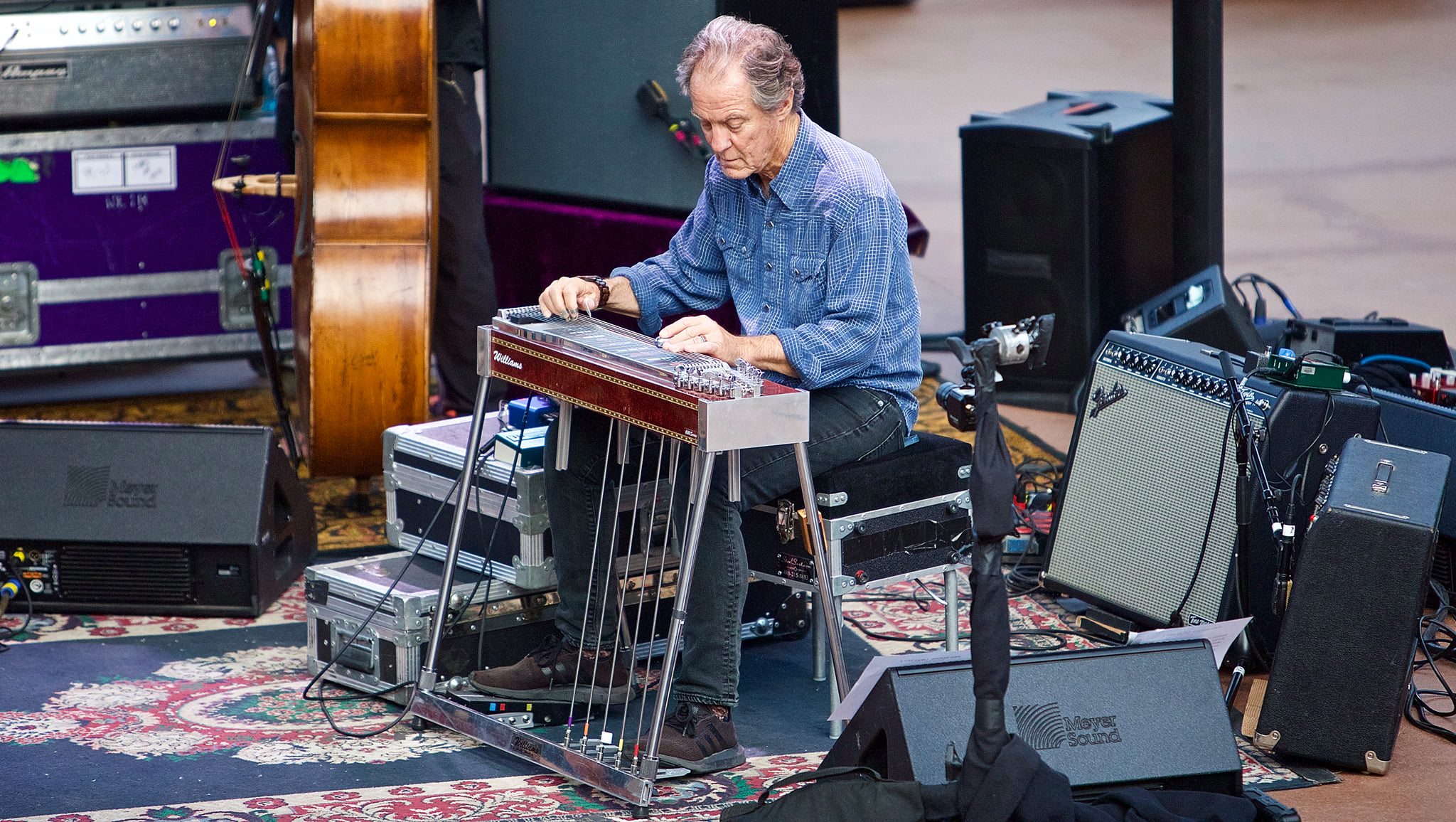
With the set underway, the group continued, moving through solid renditions of Garcia’s emotive “Mission in the Rain” and Weir’s solo original “Only a River”, both of which gave way early on to the power and prowess of Leisz’s powerful slide voicings and showed this more than capable talent as lead as well as accompaniment.
No Weir performance of late would be complete without a story and it was here that Weir paused to address the audience and start a story about an infamous train trip in 1971 across Canada, a trip familiar to anyone who has seen the documentary Festival Express. Weir continued, referencing that one characteristic that made this train ride exceptional was that each train car had a different theme, from rock to blues to country, and each car was filled with different players, Weir mentioning Junior Wells and Buddy Guy, doing their thing as the steel circus made its way down the tracks. Weir paused on the country car and said that “this next tune was a big hit with the country folk in that car” and with that transitioned into “Friend of the Devil”. The extended honky-tonk keying of Chimenti and Leisz’s syrupy slide throughout made this number exceptionally enjoyable and had the whole venue singing along. Weir rotated in for his solo which was without blemish as Lane shuffled along and Was’ grin grew bigger with every measure.

Weir attempted to continue to regale the Festival Express story but was interrupted by an unintelligible suggestion by Lane, to which Weir replied,” The first rule in rock and roll is never take your drummer’s best advice. Believe me, I experientially know, uh, well, just trust me on that one”, eliciting a round of laughter from both sides of the stage. With that, the band continued the set with an emotional “Looks Like Rain”, complete with a rousing building finish that viscerally washed everyone clean standing between the two rock towers at twilight.
To close the set, Weir brought out the Wolf Pack for an inspired version of “Cassidy”. The addition of the horn arrangements to the tune gave the jam section a dark jazzy feel and played well off of Chimenti’s angular support in the minor. The ethereal sawing of “The Madman” Tolling on violin gave the tune dramatic drive, counterbalancing the fiery runs from Brown’s saxophone, as the two escalated the crescendo of the finale section. At tune’s end, the only question was why hadn’t The Wolf Pack been out on stage the whole time!
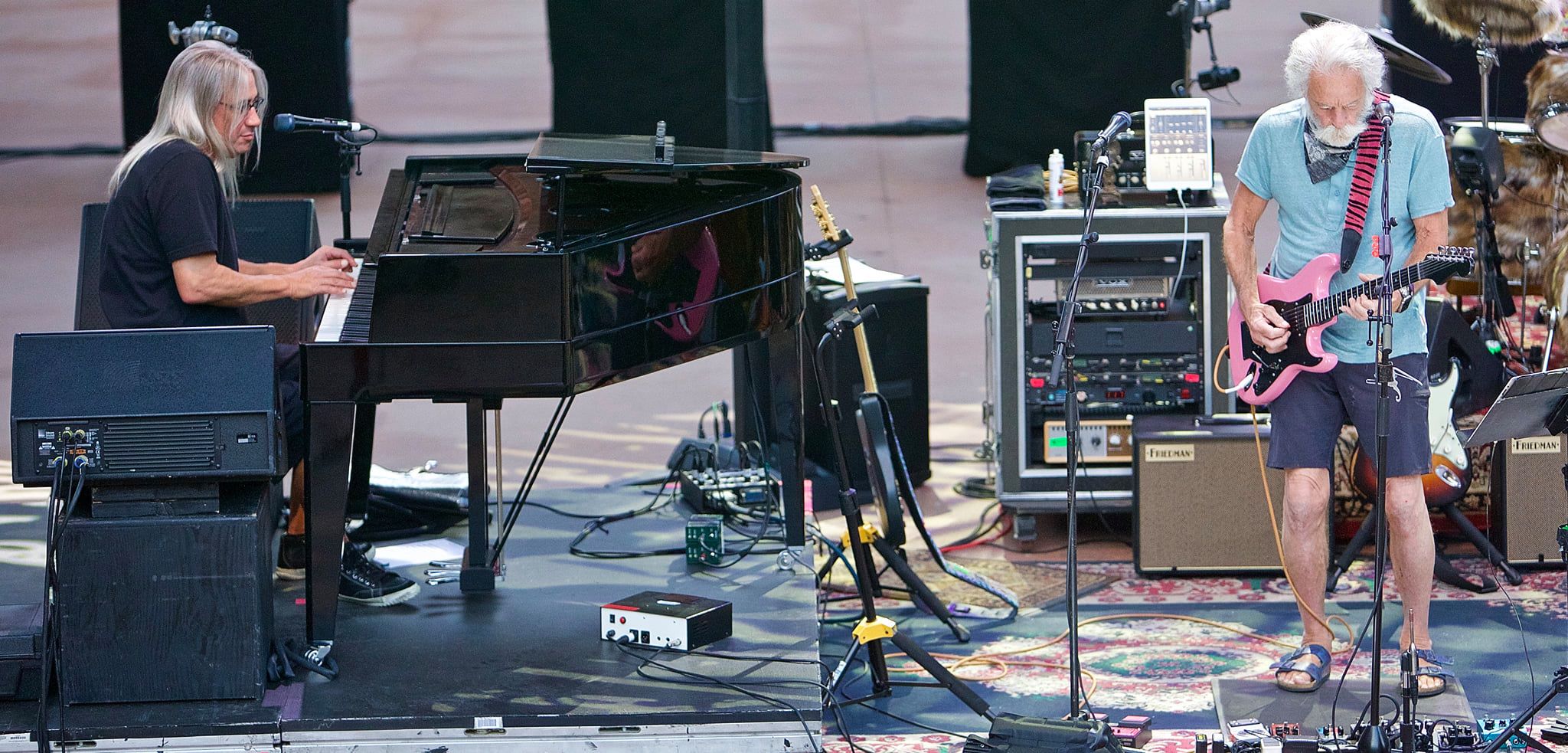
By the end of set one, it was easy to discern that the group was well rehearsed, Weir was looking and feeling strong, delivering solid vocals and spot on licks and notes, and with the closer and all of its interplay, that the second set held the promise of being exceptional.
With the start of intermission and the house lights up, it was clear to see that everyone was having a ball and that in fact the COVID capacity concerns were a thing of the past as nearly every seat in the house was occupied by someone shaking their bones.
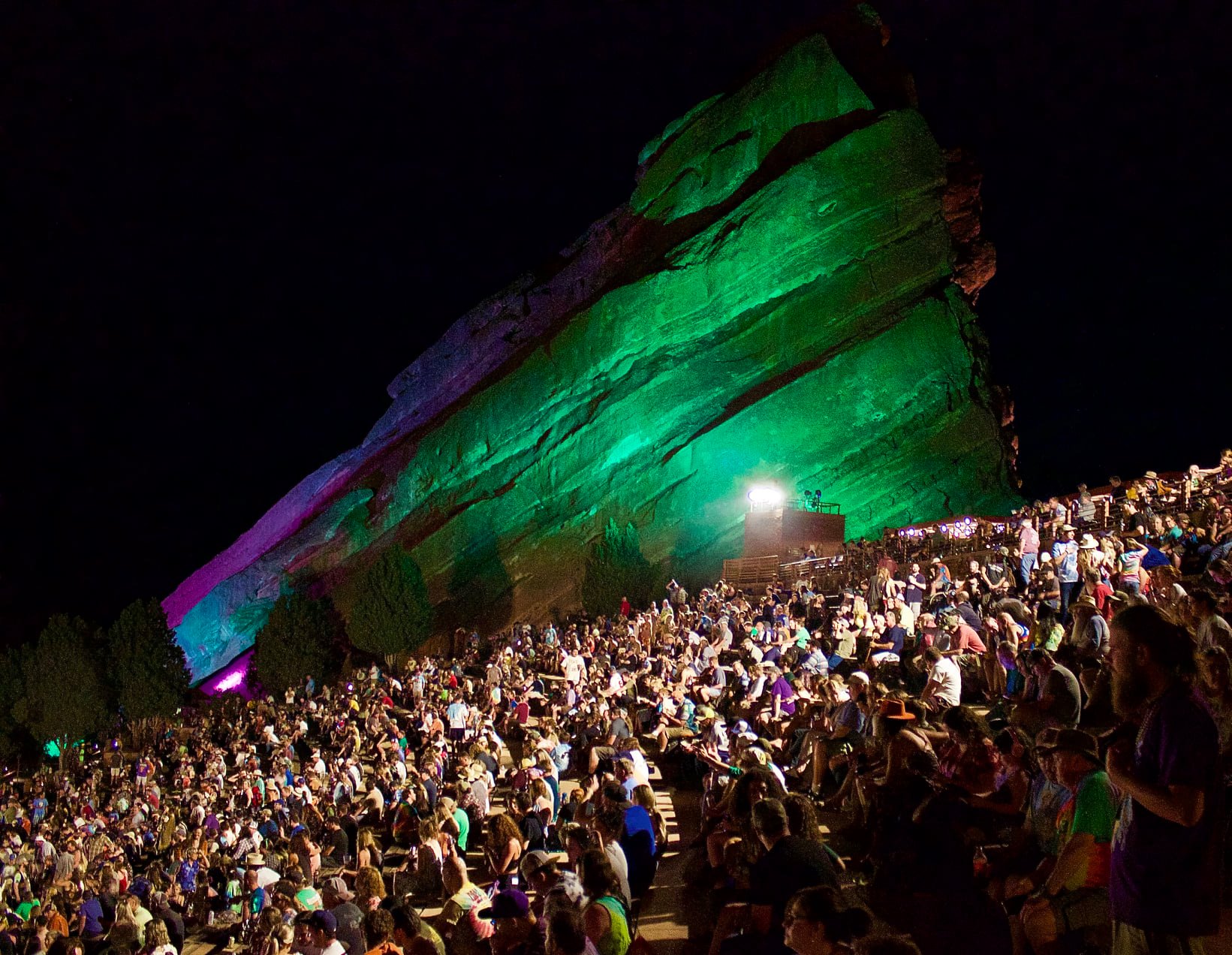
Like set one, set two started with the band sans The Wolf Pack and the song of choice was “Me and My Uncle”. As expected, this grateful staple initiated the group sing along from the opening line to the end and the Colorado and Denver references were well received and continued to solidify the moment for player and listener alike. Between the ragtime of Chimenti and smooth slide of Leisz, the tune had a great authentic feel to it, conjuring images of western saloons and cowboys of the 1800’s.
With a quick pause, The Wolf Pack made their way onto the stage and settled in for an 18-minute version of “Estimated Prophet”. Throughout the tune, every member on that stage earned their keep, producing a spiral of sound that swung the spectrum from bright inspirational moments to the dark jazz blues infusion that is the expectation for any great version of this GD classic. The jam section here was unhurried, layered, and thick, each player blurring the auditory line between the end of their line and the line of the next contributor while Weir’s familiar metallic echo bounced off those high rock walls and spun many in time under clear starry skies.
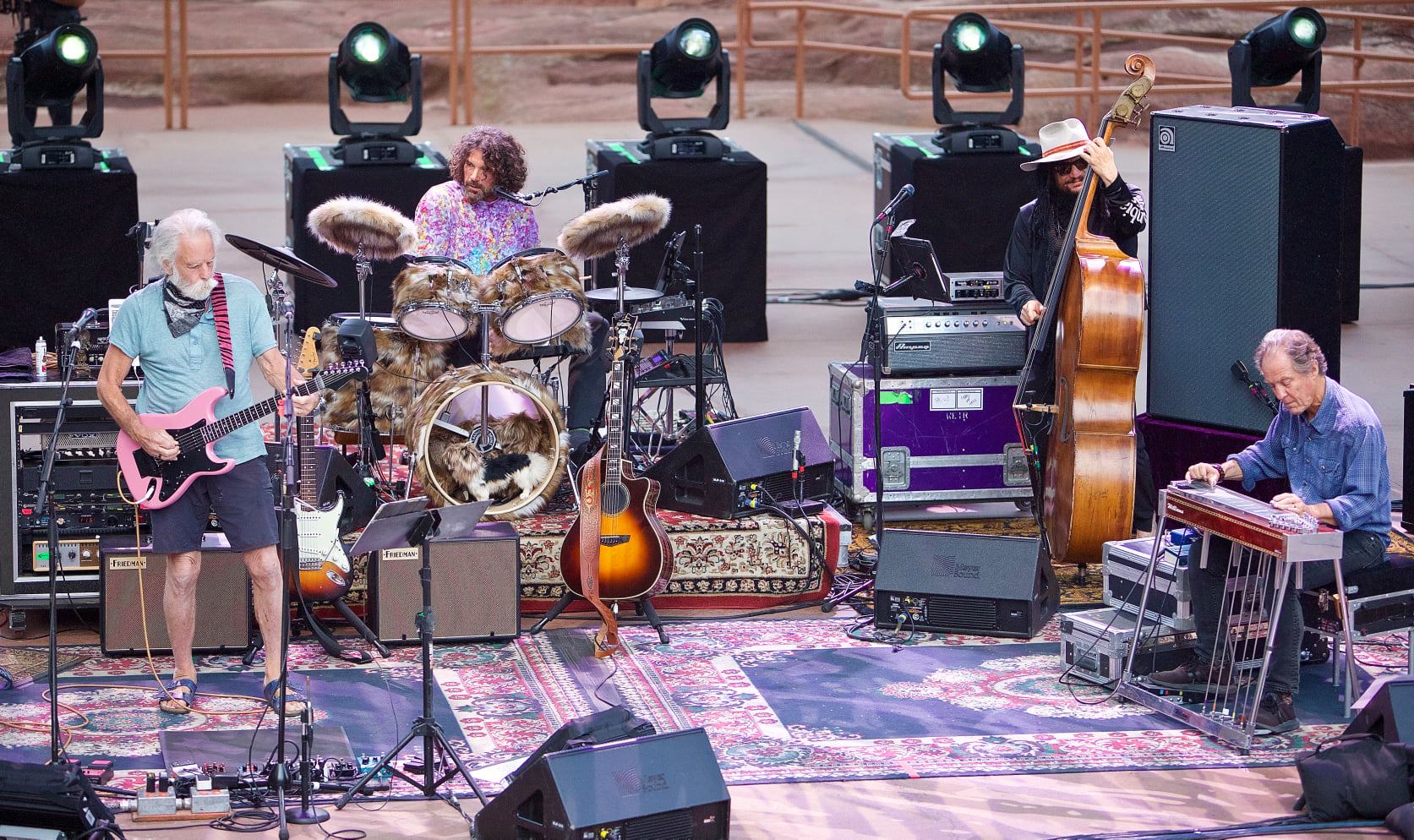
Leaving the sandy shores of introspection and taking a more omnipotent perspective, the group moved from the prophetic into the historic pairing of “Eyes of the World”. From the onset, the droning of the horns intermixed with the borderless lap steel provided a billowing tapestry that kept the tune moving. Weir delivered the first solo against this backdrop and showed that his talents both in rhythm and melody have only improved with time.
When horns are around for any version of “Eyes of the World”, most fans recall the greatness of Branford Marsalis and The Grateful Dead in March of 1990. For this night, the ante was upped, as The Wolf Pack took turns revolving and evolving through the jam section, beginning with not saxophone, but trombone then saxophone, then fiddle, each producing a line with the next player picking up without pause from where the predecessor left off, keeping the cycle spinning for many measures to the delight of the band and audience alike.
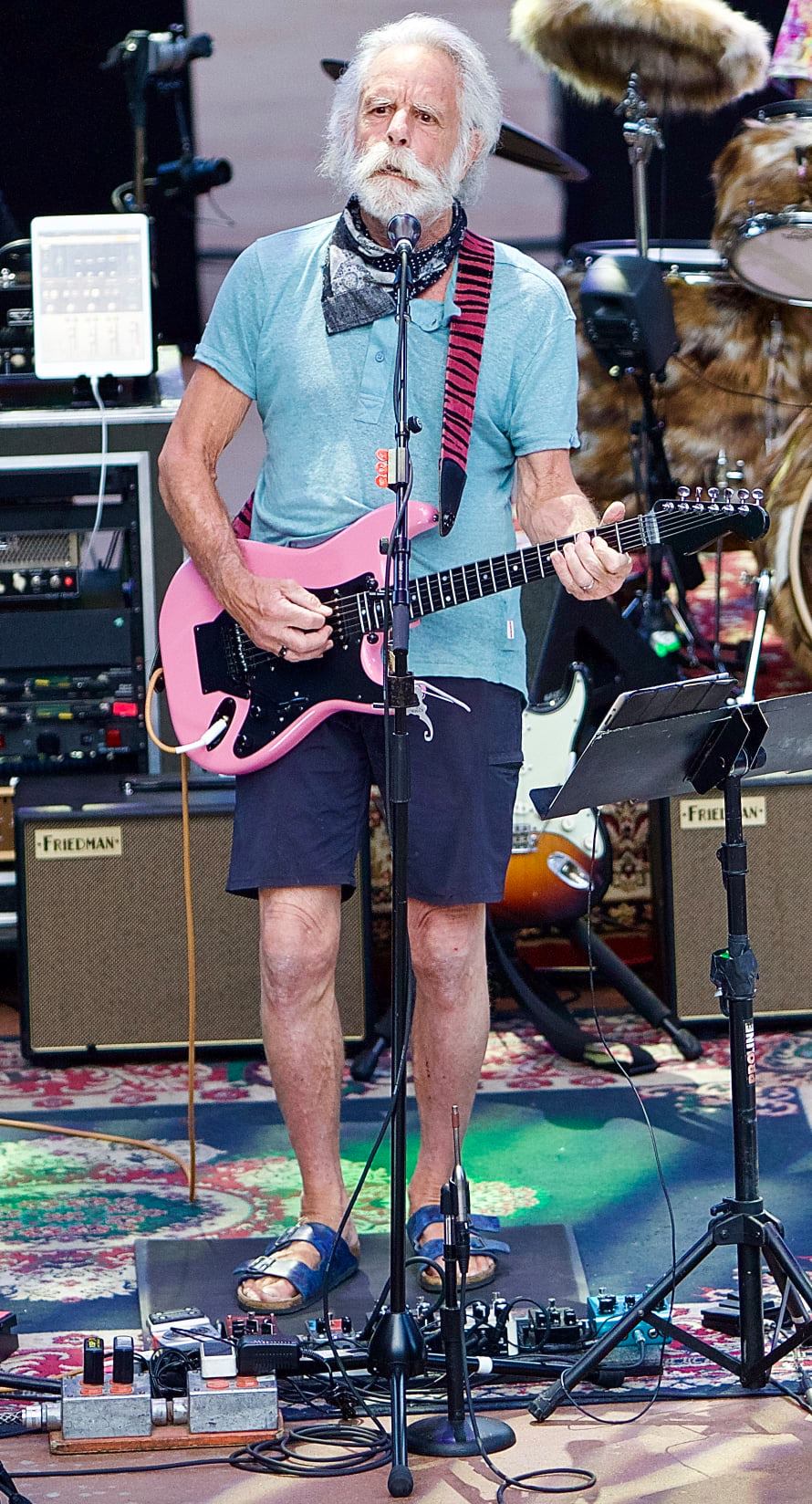
As Eyes hit the 9-minute mark, the band shifted in unison to the first big surprise of the night, the debut cover of Marvin Gaye’s “What’s Goin’ On”, a surprise audibly and visually welcomed by everyone in the house. Between 2021 marking the 50th anniversary of the album of the same name and the message the tune evokes, it was probably both that inspired its introduction and placement. Although short lived at a little more than 3 minutes in length, the fact that it was well received and fit perfectly in the Eyes’ midpoint makes one hopeful it will not be the last time. Again, without falter, the band shifted back to Eyes and concluded the end with a series of upbeat exchanged punches between the horn section and the drums in call and response fashion. In the end, this section of the set clocked in at 16 minutes of bliss and talent.

Pausing for merely a handful of seconds, the band set out to finish what they had started the night before. On night one, the group converted the venue from amphitheater to Terrapin Station and for this night, the aim was to complete the conversion. Picking up where they left off, the band started up their debut of “Terrapin Transit”. From the first licks of the eerie intro to the Arabian groove, the band was on top of the changes throughout and it was discernable that this piece had been practiced to perfection. “Terrapin Transit” shifted into “At A Siding”, another debut for the band, and it was apparent that the band meant to complete the suite before departing the hallowed grounds, finishing off the ten-minute trifecta with “Terrapin Flyer”. Throughout the three-piece movement, Lane and Was thundered their surroundings to great delight, both their own as well as that of the capacity crowd. At times, Lane’s delivery sounded more like a multi-appendaged beast than single man at the kit. His timing was impeccable and there was nary a missed beat nor tom strike too many. From the audience perspective this auditory bliss had been experienced on a group level and was clearly recognized as a first for all from this new ensemble.

At the Terrapin close, Chimenti noodled a bit on his own as the rest of the band got a drink and caught their breath. When they were ready, the band came back together and laid out a soulful version of “The Days Between”, unhurried, heartfelt, and true. With Weir continuing at the vocal controls, hitting every lyric without incident, and demonstrating once again that whatever he is doing to stay young, vibrant, and connected is working exponentially. Again, the aqueous textures of the pedal steel contributed significantly to the ghostly feel and the droning fiddle support set the whole of the experience afloat.
As the reflection of “The Days Between” came to a close, the playful bounce of “China Cat Sunflower” emerged to initiate the close of the set. With its whimsical and ambiguous lyrics alongside the pep of its stride brought the crowd back into the sing along mode and got the 18000 plus feet up and moving once again. The floral feline got about 5 minutes of attention before the band moved to a succinct transition jam and as expected the segueing finale would be the normal pairing of the traditional tune “I Know You Rider”. As the rider began his journey, the audience cheered the band on in anticipatory elation with one final Colorado reference looming in the near future. Although the rider never reached a blistering speed and rather took a softer approach in many aspects, the quality of playing never degraded and the audience was treated to the shared Colorado lyric while being bathed in rich lighting as the band stared back into the once darkened void, now seeing thousands of faces sharing in the moment.

For the encore slot, the band chose yet another classic Dead number in “Ripple” and the audience was all too eager to sing right along with the band up to the final word.
In the end, the evening was near perfect: the sound was dialed in, the lights were diverse and well-choreographed, and the band did not sound anywhere near being off the road for 18 months. The show was well worth the price and everyone leaving the scene felt like what they paid for the experience was far too cheap for the end result. The level of talent that has surrounded Weir on his life long musical journey certainly is renowned and this latest infusion only shows that he still holds the magic that draws others to his flame and his vision sees far past the horizon into other lands, on future journeys, through other songs still unsung.





